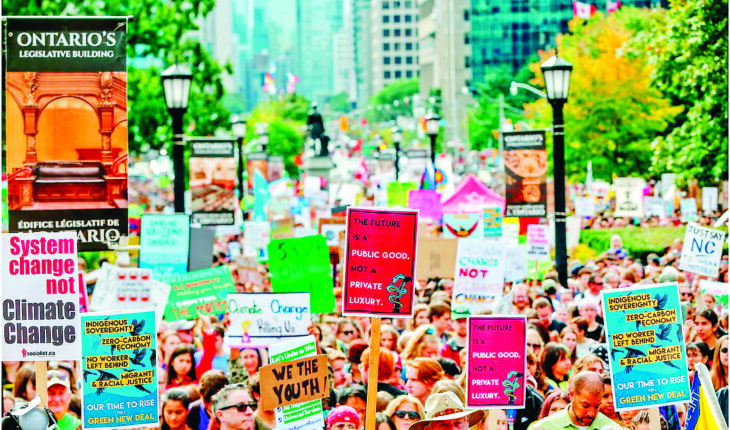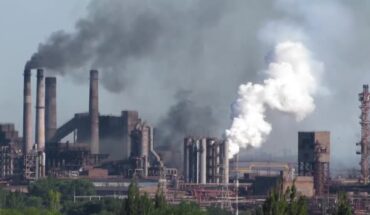Mukul Sanwal explains how the wasteful behaviour of the West endangers the planet,2021 will be the year for a new global climate policy and India has the soft power to bring together the high and low emitters. Among the ‘major economies’, India will meet its Paris Agreement target for 2030. Its per capita emissions are one-third of the global average and it will remain within its share of ecological space.
In an urbanised world, two-third of emissions arise from the demand of the middle class for infrastructure, mobility, buildings and diet. Well-being in cities is reflected in saturation levels of infrastructure with consumption, not production, driving growth as well as high urban per capita emissions. Infrastructure worldwide has used half of total materials, mainly construction, cement and steel, which have no substitute, and will need half of the available carbon space before comparable levels of infrastructure are reached globally around 2050. Peaking of emissions comes some 20-30 years after saturation of infrastructure has been achieved, with related high levels of well-being, as in the case of the West, before net zero emissions are considered. Prime Minister Narendra Modi was justifiably cautious at the Climate Action Summit and avoided commitments to cap emissions.
Inequity is built into the climate treaty, which considers total emissions, size, and population, making India the fourth largest emitter, even though, according to the United Nations, the richest 1% of the global population emits more than two times the emissions of the bottom 50%. Clearly, net zero or carbon neutrality by 2050, and the cap on emissions it implies, applies only to countries with high per capita emissions, GDP and well-being.
The focus on physical quantities indicates effects on nature whereas solutions require analysis of drivers, trends and patterns of resource use. This anomaly explains why the link between well-being, energy use and emissions is not on the global agenda. New thinking must enable politics to acknowledge transformational social goals and the material boundaries of economic activity and not the latter without the former. Modifying unsustainable patterns of natural resource use and ensuring comparable levels of well-being are societal transformations and two sides of a coin interlinked with international cooperation to serve sustainable development.
The vaguely worded ‘carbon neutrality’, balancing emitting carbon with absorbing carbon from the atmosphere in forests, for example, is a triple whammy for latecomers like India. Such countries already have less energy-intensive pathways that will not encroach on others’ ecological space, a young population, and are growing fast to reach comparable levels of well-being with those already urbanised and in the middle class.
Industrialisation and urbanisation are not the problem ‘per se’; the problem is the way they were designed in the colonial context: keeping commodity prices low, overly resource-intensive, defining progress as material abundance, and assuming that technology would solve the ecological problem.
By 1950, the contribution of the U.S. to total emissions peaked at 40%. It has declined to approximately 26%, the largest in the world. North America and Europe, with less than one-quarter of the world population, are responsible for almost half of global material use. The share decreased to one-fifth in 2010, when Asia with half the world population used its legitimate share of half of global resource use. But the ecological damage had already been done. China, with four times the population of the U.S., accounts for 12% of cumulative emissions, and India, with a population close to that of China’s, for just 3% of cumulative emissions that lead to global warming.
Reconstruction in the West after World War II led to acceleration of material use, resulting emissions and sharp rise in global temperature around 1970, before growth commenced in Asia. Urban transformation requires huge amounts of iron and steel, cement, construction materials and energy for infrastructure. Before infrastructure reaches saturation levels and manufacturing stabilises, material use shapes ways in which countries build houses and transport infrastructure, and how they organise mobility and deliver manufactured goods, food and energy. With the population moving to cities, growth in per capita incomes drives consumption and vehicle emissions becomes the continuing driver of increasing levels of material use, far more significant than manufacturing.
In each sustainability benchmark like housing size and density, public bicycle transport and eliminating food waste, India is doing better than the West. The rising prosperity of the world’s poor does not endanger the planet; the challenge is to change wasteful behaviour in the West, and these changes occur at decadal scales.
India must highlight its unique national circumstances. For example, the meat industry, especially beef, contributes to one-third of global emissions. Indians eat just 4 kg of meat a year compared to those in the European Union who eat about 65 kg and Americans who eat about 100 kg. Also to be noted is the fact that the average American household wastes nearly one-third of its food.
Transport emissions account for a quarter of global emissions. They are the fastest-growing emissions worldwide and have surpassed emissions from generation of electricity in the U.S. Transport emissions are the symbol of Western civilisation and are not on the global agenda.Mukul Sanwal is former Director of the United Nations Framework Convention on Climate Change. Views expressed are his own
In an urbanised world, two-third of emissions arise from the demand of the middle class for infrastructure, mobility, buildings and diet. Well-being in cities is reflected in saturation levels of infrastructure with consumption, not production, driving growth as well as high urban per capita emissions. Infrastructure worldwide has used half of total materials, mainly construction, cement and steel, which have no substitute, and will need half of the available carbon space before comparable levels of infrastructure are reached globally around 2050. Peaking of emissions comes some 20-30 years after saturation of infrastructure has been achieved, with related high levels of well-being, as in the case of the West, before net zero emissions are considered. Prime Minister Narendra Modi was justifiably cautious at the Climate Action Summit and avoided commitments to cap emissions.
Inequity is built into the climate treaty, which considers total emissions, size, and population, making India the fourth largest emitter, even though, according to the United Nations, the richest 1% of the global population emits more than two times the emissions of the bottom 50%. Clearly, net zero or carbon neutrality by 2050, and the cap on emissions it implies, applies only to countries with high per capita emissions, GDP and well-being.
The focus on physical quantities indicates effects on nature whereas solutions require analysis of drivers, trends and patterns of resource use. This anomaly explains why the link between well-being, energy use and emissions is not on the global agenda. New thinking must enable politics to acknowledge transformational social goals and the material boundaries of economic activity and not the latter without the former. Modifying unsustainable patterns of natural resource use and ensuring comparable levels of well-being are societal transformations and two sides of a coin interlinked with international cooperation to serve sustainable development.
The vaguely worded ‘carbon neutrality’, balancing emitting carbon with absorbing carbon from the atmosphere in forests, for example, is a triple whammy for latecomers like India. Such countries already have less energy-intensive pathways that will not encroach on others’ ecological space, a young population, and are growing fast to reach comparable levels of well-being with those already urbanised and in the middle class.
Industrialisation and urbanisation are not the problem ‘per se’; the problem is the way they were designed in the colonial context: keeping commodity prices low, overly resource-intensive, defining progress as material abundance, and assuming that technology would solve the ecological problem.
By 1950, the contribution of the U.S. to total emissions peaked at 40%. It has declined to approximately 26%, the largest in the world. North America and Europe, with less than one-quarter of the world population, are responsible for almost half of global material use. The share decreased to one-fifth in 2010, when Asia with half the world population used its legitimate share of half of global resource use. But the ecological damage had already been done. China, with four times the population of the U.S., accounts for 12% of cumulative emissions, and India, with a population close to that of China’s, for just 3% of cumulative emissions that lead to global warming.
Reconstruction in the West after World War II led to acceleration of material use, resulting emissions and sharp rise in global temperature around 1970, before growth commenced in Asia. Urban transformation requires huge amounts of iron and steel, cement, construction materials and energy for infrastructure. Before infrastructure reaches saturation levels and manufacturing stabilises, material use shapes ways in which countries build houses and transport infrastructure, and how they organise mobility and deliver manufactured goods, food and energy. With the population moving to cities, growth in per capita incomes drives consumption and vehicle emissions becomes the continuing driver of increasing levels of material use, far more significant than manufacturing.
In each sustainability benchmark like housing size and density, public bicycle transport and eliminating food waste, India is doing better than the West. The rising prosperity of the world’s poor does not endanger the planet; the challenge is to change wasteful behaviour in the West, and these changes occur at decadal scales.
India must highlight its unique national circumstances. For example, the meat industry, especially beef, contributes to one-third of global emissions. Indians eat just 4 kg of meat a year compared to those in the European Union who eat about 65 kg and Americans who eat about 100 kg. Also to be noted is the fact that the average American household wastes nearly one-third of its food.
Transport emissions account for a quarter of global emissions. They are the fastest-growing emissions worldwide and have surpassed emissions from generation of electricity in the U.S. Transport emissions are the symbol of Western civilisation and are not on the global agenda.Mukul Sanwal is former Director of the United Nations Framework Convention on Climate Change. Views expressed are his own
Attachments area





